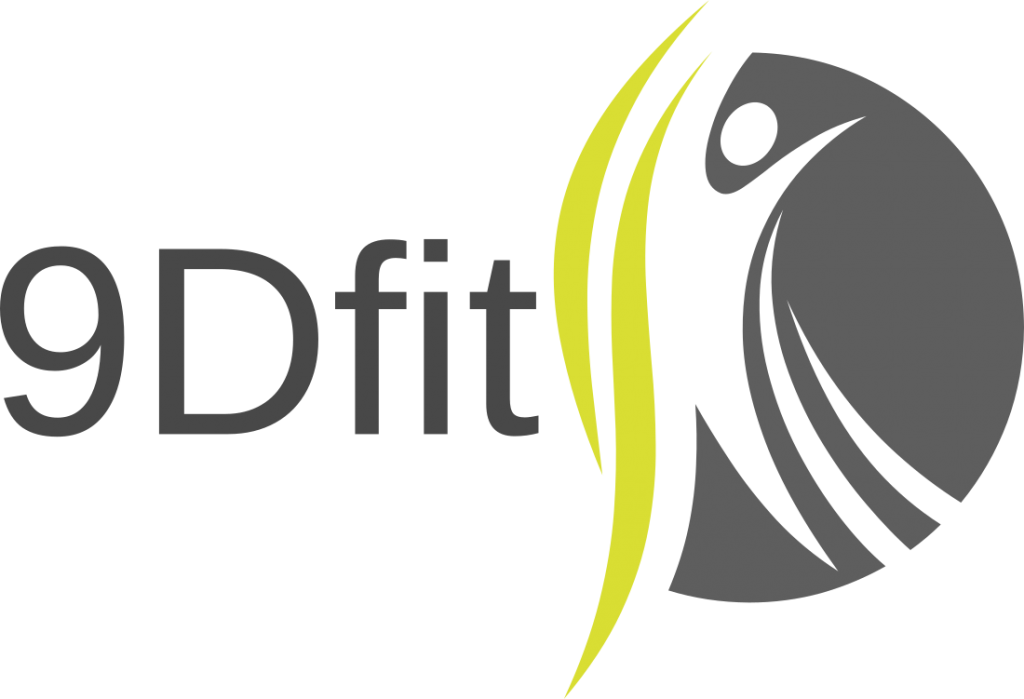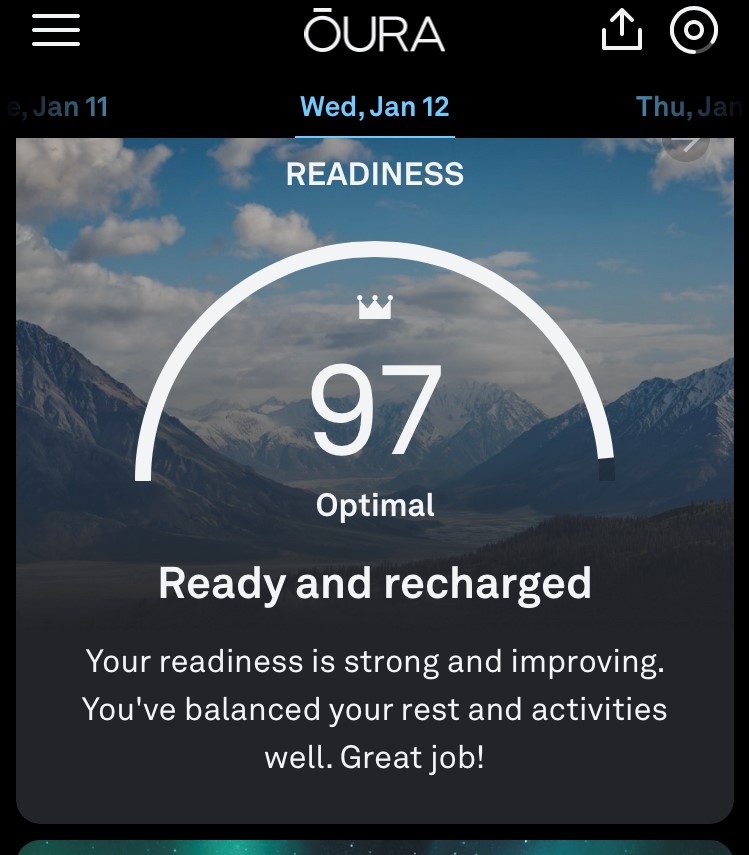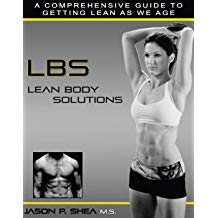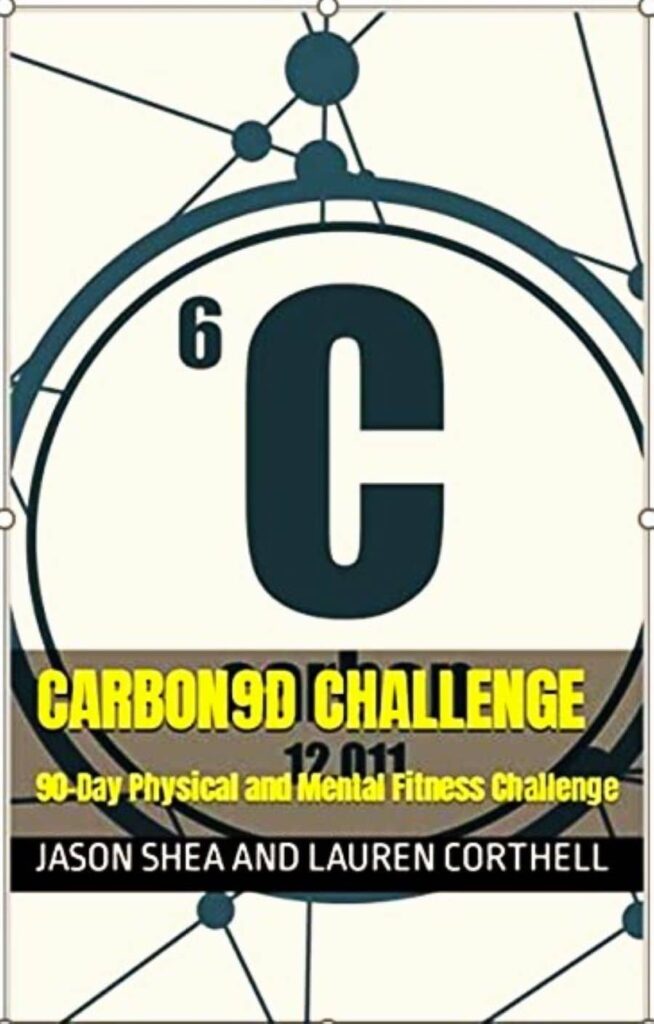By Jason Shea M.S., CSCS, PICP IV
Have you ever wondered if the foods you eat today can impact your nervous system and physical readiness tomorrow? Or exactly how does food affect next day physical readiness?
You’re getting ready for a big athletic event tomorrow. Whether it be an athletic competition, workout event, or adventure race, your nerves may be on high alert the day before. You’ve done some light activity, stretched, hydrated, foam-rolled, used your compression gun, taken your supplements, hit the cryo chamber/cold water, wore your blue blocker glasses, did your Normatec, and crawled into bed early. You may have even carbed up the night before to give you energy for tomorrow.
Tomorrow comes and you wake up feeling tired and sluggish. Didn’t sleep well. Body feels tired and heavy. Your apple watch says you slept like crap. You don’t feel refreshed at all. Now you have to go out and compete your hardest.
What happened? You thought you did everything you could. Right?
Status Quo?
Does this sound familiar: After hitting the snooze button a few times, you never wake up feeling refreshed. Morning conversations or activity are off limits until you have had a morning coffee or two? Some may deal with headaches, bloating, belly/love handle fat accumulation, brain fog, acid reflux, sluggishness, and more, while others may have more serious health complications including diabetes, blood pressure, metabolic syndrome, etc.
Chances are you workout, try to get enough sleep, and manage your stress as best you can. You may also watch what you eat (except on weekends…….. And holidays…..And birthday parties?……….)).
Even with all this effort, that optimal health feeling of running through walls you saw on the cover of Dr. Oz’s magazine still evades you.
What if food was one of the major missing links? Have you ever asked yourself or tried to answer these questions: How does what you eat the day before affect your workout? How does food affect recovery? Or just how much can the food you eat the day before impact your nervous system, heart rate, sleep, physical readiness and more?
You Are what you Eat
Well, we’ve all heard the saying “you are what you eat”. Did you know that science actually found this to be true. A 2018 study on human longevity found that the food has a significant impact on the way our DNA sequences are converted into messages that can be used to produce proteins responsible for daily function and survival (28).
You’ve probably also already know that A 2019 study from the Journal of the American Medical Association found that increased consumption of processed food is associated with a 14 percent increase in risk for all cause mortality (29).
You may already know that studies have found links between high fructose corn syrup (HFCS), soybean oil, and trans fats and health issues. For example, a 2010 study tested the impacts of 12 hour per day access to high fructose corn syrup (HFCS) versus the impacts of 12-hour access per day to sucrose, another sugar. Even though same number of calories consumed total, though less calories from HFCS than sucrose, HFCS group had significantly greater weight gain and body fat accumulation. HFCS led to significantly greater increases in triglycerides and fat about the abdominal region (2).

A 2015 study also found that a high fructose diet caused rectal prolapse and fatty liver in mice (8). According to a 2021 GlobalNewsWire.com press release, the Hemorrhoid Treatment Devices Market is expected to reach nearly a billion dollars by 2025. They say that “the elevated presence of hemorrhoids in diverse population groups is estimated to escalate with increased causative factors in the individual settings.”
A recent 2020 study from Endocrinology found that over 100 genes may be affected by soybean oil, including those that can lead to neurological conditions including autism, Alzheimer’s disease, anxiety, and depression (9). In 2015 researchers found that soybean oil may lead to an increase in metabolites in the liver as well as upregulation of genes involved in obesity, diabetes, inflammation, mitochondrial function, and more (8).
When it comes to trans fats, a study out of the Journal of Nutrition and Metabolism explains that “humans cannot produce TFAs (Trans Fatty Acids), therefore their serum levels of TFAs essentially reflect dietary consumption (17).”
The same study pointed out “that TFAs may change cellular lipid and glucose metabolism, intracellular signaling pathways, and cytokine secretion (17)” all of which can lead to the development of metabolic diseases including diabetes, CVD, and more.
The researchers concluded “the correlation between objectively measured TFAs levels and markers of inflammation in the current study supports the hypothesis that TFAs may contribute to common chronic diseases by exacerbating the underlying chronic inflammatory processes. Control of TFAs intake may therefore have a role in the prevention of chronic disease via action on chronic inflammation. In this regard, action should target all exogenous sources of TFAs, either naturally occurring dairy or industrially processed (17).”

Trans fats have also been shown to impact memory. A 2015 study on over a thousand subjects found that for every gram per day of dietary Trans Fats consumed, there was an estimated .76 fewer words recalled in a memory test (11).
Speaking of brain, did you know that a group of researchers found that a Westernized Diet may negatively impact on memory and brain function? The 2015 study found that a high refined carbohydrate diet was linked to a smaller memory center of the brain, the hippocampus (13).
You’ve probably already heard that a study from the American Journal of Clinical Nutrition. found that high glycemic foods have been linked to increased risk for depression (10). But did you know that another study, this one looking at over 35 thousand brain scans, found that that progressively higher BMIs led to progressive decreases in regional cerebral blood flow (1). In other words, the more obese, the less blood and oxygen to the brain.
Sympathetic vs Parasympathetic
Have you ever thought about how our nutrition impacts your nervous system? In particular your sympathetic vs parasympathetic systems? Or how your nutrition can impact your sleep or physical readiness the next day?

Quick anatomy physiology review: The Autonomic Nervous System is made up of the Sympathetic (Fight or Flight response) Nervous System and the Parasympathetic (rest, relax, restore homeostasis). In other words, they balance each other out.
For example, if you are sympathetic nervous system dominant, chances are your heart rate variability may be low, and you may be chronically stressed, sleep deprived, low energy, caffeine dependent, etc.
In 1982 researchers published a paper titled “Diet-induced changes in sympathetic nervous system activity: possible implications for obesity and hypertension.” In this paper they found that
Carb intake increases sympathetic nervous system activity. The researchers state that “insulin may be a major link between changes in dietary intake and changes in central sympathetic outflow. Caloric restriction reduces, and carbohydrate administration increases blood pressure in spontaneously hypertensive rats, changes consistent with a primary effect of caloric intake on sympathetic nervous system activity. Stimulation of the sympathetic nervous system by overfeeding may contribute to the development and maintenance of hypertension in biologically-predisposed animals and man (35).”
In 2003 a research team found that “consumption of a CHO-rich meal causes greater cardiac SNS activation in lean than in obese women, while fat ingestion does not result in any appreciable change in either group (33).”
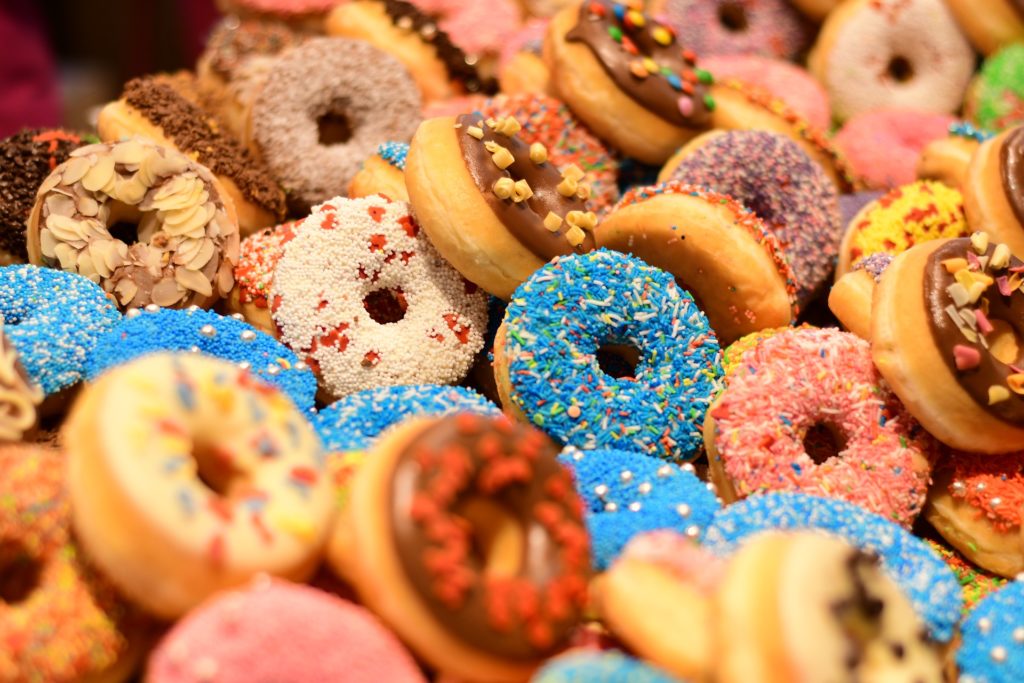
A 2009 study from the Journal of Nutrition, Health and Aging found that “diet composition plays a major role in determining the level of SNS (Sympathetic Nervous System) activity. High-carbohydrate diets, especially in the form of high-glycemic index carbohydrate, elicit a high insulin response, with significant activation of the SNS. In contrast, diets containing small amounts of carbohydrate, or diets with a low-glycemic load, are not associated with a significant sympathoexcitory effect (15).”
The researchers concluded “that in consideration of these facts, there can be no doubt that the introduction of starch and sugars into human nutrition has brought about a new metabolic situation: A diet-related chronic increase in SNS activity (15).”
On the flip side, foods such as quality fats, fish, leafy green vegetables, and high antioxidant fruits have been found to have a positive effect on your nervous system. A 2016 study found that “Omega 3 fatty acids consistently produce statistically significant reductions in baseline heart rate that are accompanied by increase in HRV (4).” This led the researchers to conclude that “omega 3 fatty acids seem to have highly significant effects on intrinsic pacemaker rate and HRV (4).”
Another study, this one from the American Journal of Clinical Nutrition found that “high consumption of fruit and vegetables may enhance the parasympathetic (vagal) response and may reduce the sympathetic response (25).”
In that same study the researchers stated that “the strongest associations we observed were between green leafy vegetables and HRV. Green leafy vegetables such as spinach and collards are widely considered healthful foods abundant in vitamin C, carotenoids, folate, and α-linolenic acid (25).”
Self-experimenting
With help of modern-day wearable technology, it was time to put the science to the test.
The wearable technology of choice was/is the Oura Ring. This wearable gives lots of cool biometrics. These include:
- Physical readiness score each morning you wake up
- Sleep score each morning you wake up
- Heart Rate Variability
- Heart Rate
- Body Temperature
- Sleep (Broken down into deep sleep, REM, light, and awake times)
Baseline nutrition and fitness levels.
The umbrella for baseline nutrition was intermittent fasting (1st meal 12:00/1:00PM, last meal 6:00/6:30 PM). Baseline foods included sardines, mackerel, beef, chicken, cage free organic eggs, avocados, pecans, walnuts, pistachios, kale, broccoli, green beans, Brussel sprouts, Olive oil, coconut oil, and Death Wish coffee. At baseline carbs were backloaded (only eaten later in the day/with dinner). Carbs during high carb days included rice, sweet potatoes, gluten-free pasta, and the “occasional” dessert (Tates GF cookies or brown rice cakes with almond butter).
Basic Fitness
To avoid extreme nervous system fluctuations due to training, workout schedule utilized Dr. Kraemer and Dr. Steven Fleck’s “Daily Flexible Nonlinear Periodization” model. Workouts were limited to basic body weight and fan bike intervals (10s, 20s, or 60s) done at the same time (early morning) each day. Workout volume and intensity was determined by morning Physical Readiness score (Green light, yellow light, red light).

Green light = good to go
Yellow light = check engine light on/back off on volume/intensity
Red light = emergency lights on/engine overheating. Day off or low intensity/volume.
For an excellent read on Daily Flexible Nonlinear Periodization, check out the book Optimizing Strength Training. For more on the Fan Bike intervals check out the article 9 Awesome Benefits of the Fan Bike (2021).
Why Intermittent Fasting?
Intermittent fasting has been linked to lower levels of coronary artery disease and improved levels of insulin sensitivity (Horne 2015). A study out of the American Journal of Clinical Nutrition found that “periods of fasting can limit inflammation, attenuate pro-inflammatory cytokines and immune cells, improve circulating glucose and lipid levels, and reduce blood pressure (12)”
A 2017 study found that “the fasting itself destroys many damaged cells and damaged components inside the cells but it also activates stem cells. Once the mice begin eating again, these stem cells become part of a program to regenerate the organ or system (16).”
When it comes to brain health intermittent fasting has been shown to improve learning, memory, brain health, neuroplasticity, growth of new brain neurons, brain aging, and overall cognitive function. and overall executive function. It has also been found to have promise in treatment of neurological diseases, dementia, and cognitive decline (24, 26, 30, 34).

Another great tip about fasting and brain health comes from Alzheimer’s expert and author of The End of Alzheimer’s, Dr. Dale Bredeson. Back in 2020, for a Brain Health and Critical Decision Making Under Duress in law enforcement class, Dr. Bredeson graciously allowed us to pick his brain and introduced us to something called KetoFlex 12/3.
Sounds like a great product, right?
Its actually a way of eating.
- KetoFlex is Ketogenic flexibility: The brain’s ability/flexibility to switch from ketones to glucose as a fuel source (and vice versa).
- 12: 12-hour fasting period from last meal to first
- 3: Don’t eat within 3 hours of going to bed. This will allow your blood and energy to go to the glymphatic system rather than used for digestive purposes
Relationship Between Sleep and Brain Health

In 2013, Dr. Maiken Nedergaard and her team published an excellent paper in Science, titled Sleep Drives Metabolite Clearance from the Adult Brain. Here they explained that “the restorative function of sleep may be a consequence of the enhanced removal of potentially toxic waste bi-products that accumulate in the nervous system throughout the day during awake times (20).”
In a more recent paper discussing the glymphatic system, Dr. Nedergaard and her team found that the ability of the glymphatic system to clear those waste bi-products from the brain while you sleep “potentially explains the links between aging, sleep deprivation, and heightened risk for Alzheimer’s disease (21).”
Diet Stuff
Why Choose Certain Foods
A study looked at 67 subjects (male and female) with moderate to severe depression, taking anti-depressants, and eating an unhealthy diet. The researchers had half the subjects go on a Mediterranean Diet for 12 weeks, while the other half kept eating same way. After 12 weeks, the subjects who ate Mediterranean style saw dramatic improvements in depression scores, with some reporting scores that could be considered remission (13).
Another study, this one using MRI technology to look at the impact Mediterranean dieting had on brain gray matter thickness. The researchers found that the subjects who consumed Mediterranean diets had greater levels of cortical thickness than those who consumed lower fat/higher processed carbohydrate diets (31).
Fish and Omega-3 Fatty Acids
A 2014 study found that higher levels of omega-3 fatty acid intake were associated with greater cognitive and executive functioning and lower incidence of age-related cognitive decline (18).
When it came to the choice of mackerel and sardines as a fish source, a 2019 paper from Nutrition Advance found that they were both high in Omega-3 fatty acids and low in mercury. Check out the charts below.

Joseph M. 9 Fatty Fish High in Omega-3 (and Low in Mercury). Nutrition Advance. August 26, 2019.

Joseph M. 9 Fatty Fish High in Omega-3 (and Low in Mercury). Nutrition Advance. August 26, 2019.
Benefits of Olive Oil

In 2006 researchers looked at the benefits of a key ingredient in Olive oil called Oleuropein. They wanted to see how it impacted testosterone and cortisol when consuming a high protein diet. They found the Oleuropein helps the body to utilize proteins more economically, while increasing testosterone levels and decreasing cortisol levels (22).
Another study found that olive oil consumption can have a positive impact on heart disease risk factors (7).
When it comes to Olive oil’s effects on brain health, a 2017 paper found that “consuming olive oil reduces inflammation, stimulates autophagy, supports the growth of new neurons, helps regrow dendritic structures that form neural networks, and protects your brain from the negative effects of any amyloids that don’t get washed out at night (27).”
For this “self-experiment” the brand of choice was/is Cobram Estate Extra Virgin Olive Oil from California.
Nuts
Pecans, walnuts and pistachios were the staples. A scientific study from 2010 looked at the antioxidant capacity of various nuts (3). Below is a chart.

Bolling et al. The phytochemical composition and antioxidant actions of tree nuts. Asia Pac J Clin Nutr. 19(1); Pp 117–123. 2010.
Kale
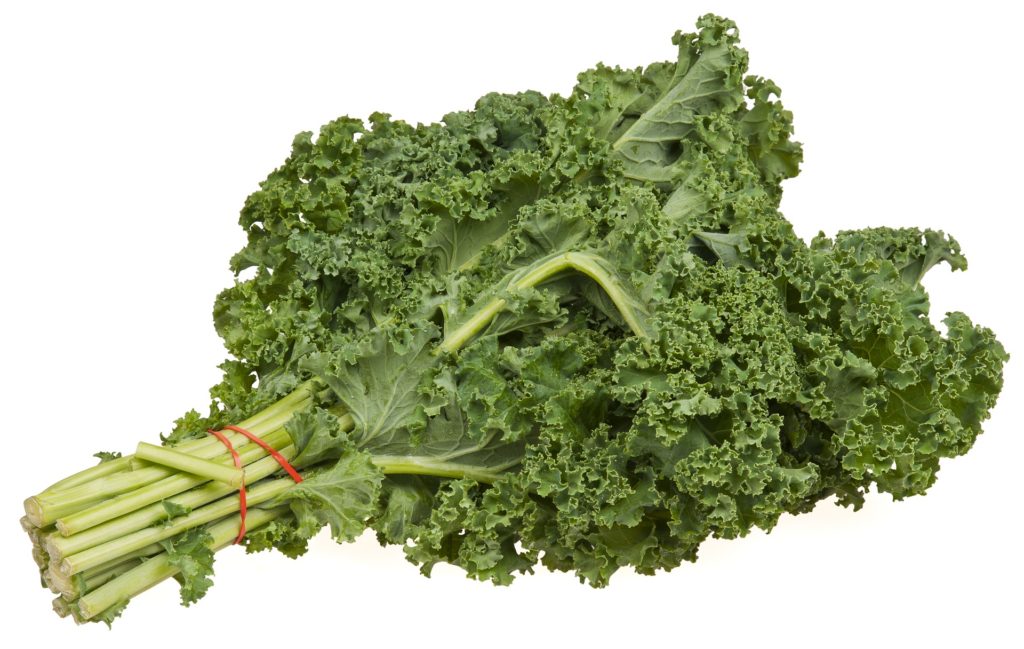
Kale contains:
- 206% daily requirement for vitamin A
- 135% vitamin C
- 684% vitamin K
- High in calcium, Magnesium Vitamin B 6, Lutein, and beta Carotene and more.
Raspberries and Blueberries
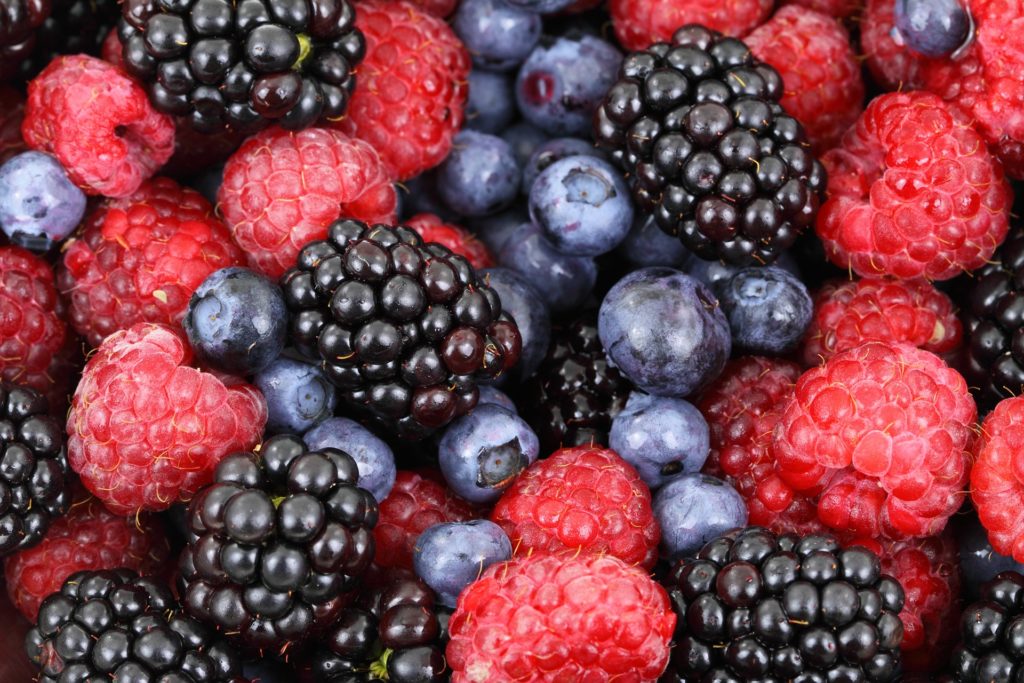
A 2018 paper explained that “various medicinal effects of berries against diseases associated with oxidative stress have been attributed to their high phenolic antioxidant content, especially anthocyanins and phenolic acids (23).”
Avocados
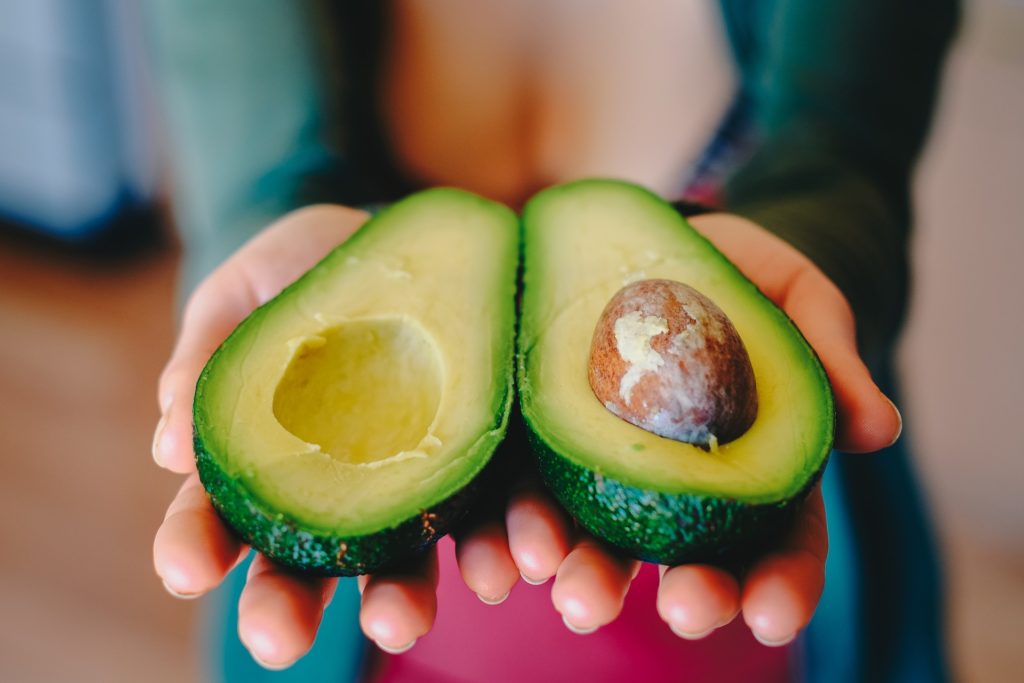
Avocados have:
- 15g of quality fat, particularly oleic acid
- 4.5g fiber
- Potassium, copper, and magnesium
- Vitamin C and E
- Vitamin B6 and B9
- Vitamin K1
- and contain lutein, beta-carotene, and more.
Coconut Oil

Coconut oil:
- Is high in MCT’s which in turn increase fat oxidation (and is good for the brain)
- Can positively impact cholesterol, triglycerides, phospholipids, and LDL
- Can help with digestion
- Contains lauric acid and monolaurin, both of which can help with immune health.
- And much more
Raw Local Wildflower Honey
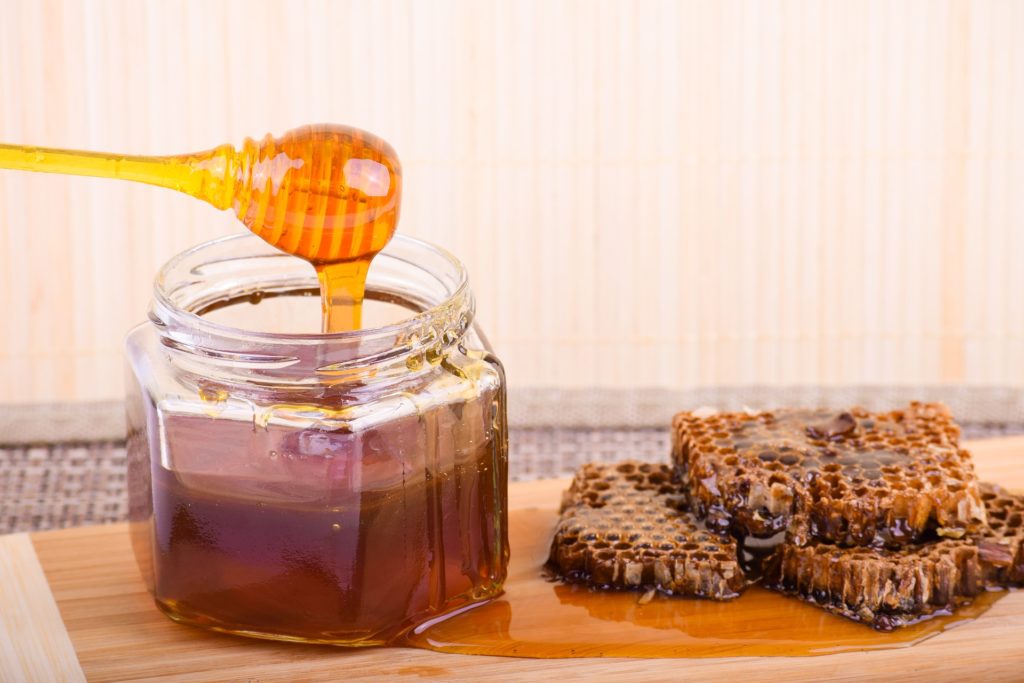
Benefits of Raw Local Wildflower Honey Include:
- Very high in antioxidants
- Can help with digestion
- No chemicals
- May help with seasonal allergies
- It may even help you sleep better
Coffee
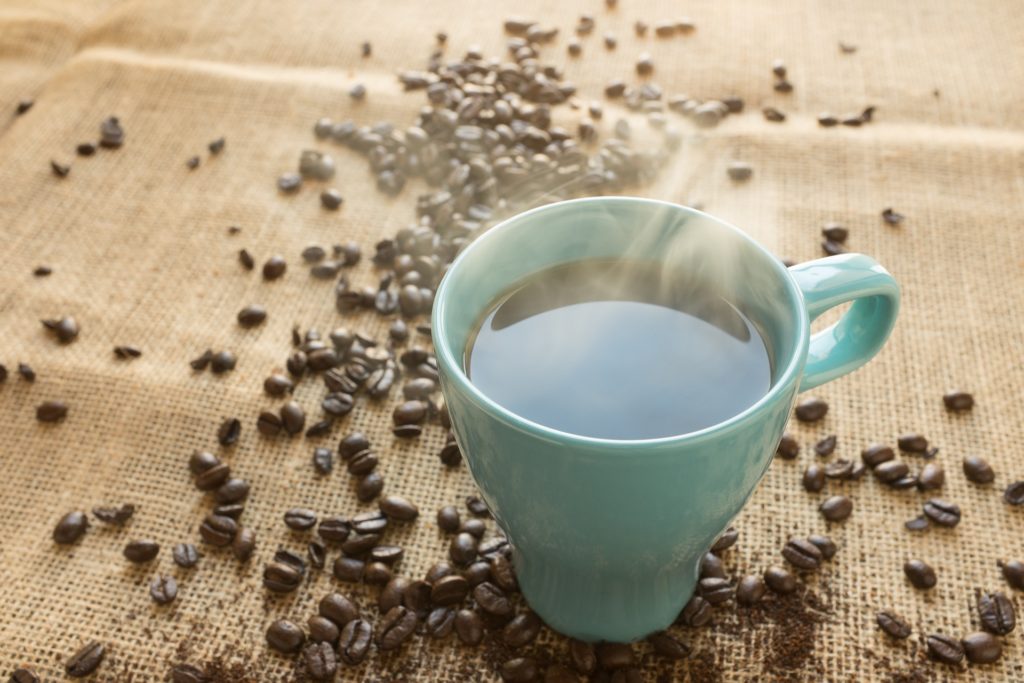
2 coffees in the morning with MCT oil, Grass Fed Butter, Cinnamon, and splash of Almond creamer.
- Organic coffee can be a good source of antioxidants called polyphenols
- MCT oil: Bulletproof Brain Octane
- Grass Fed Butter: KerryGold Grass Fed Butter
- Simply Organic Ceylon Cinnamon: High antioxidant capacity and may help with insulin response
Sweet Potato

Sweet Potatoes:
- Are a great source of Vitamins A, C, and E.
- Can have a positive impact on blood sugar regulation: The Beauregard is the most effective sweet potato variant when it comes to blood glucose regulation
- Roughly 77% of the fibers in sweet potatoes are insoluble
- Are a source of hyaluronic acid. Many long-lived people get very high amounts of hyaluronic acid from their sweet potato.
- Are a source of Magnesium
- Are a great source of antioxidants including anthocyanins and beta-carotene.
Himalayan Sea Salt and Lime Drink
Started each day off with a 16-24oz glass of water with pinch of Himalayan Sea Salt and half a lime (squeezed into it).
Benefits include:
- Vitamin C from the limes can help with immune health and detoxification.
- Salt and water help to rehydrate after sleeping.
- Salt has anti-microbial properties
- Can help with digestion
- Proper hydration can help with brain function
- And more
Daily Supplements
Probiotic containing:
- Proprietary Blend of 15 billion CFU (Lactobacillus Acidophilus, Lactobacillus Plantarum, and Bifidobacterium Longum)
- Bifidobacterium Lactis HN019 15 billion CFU
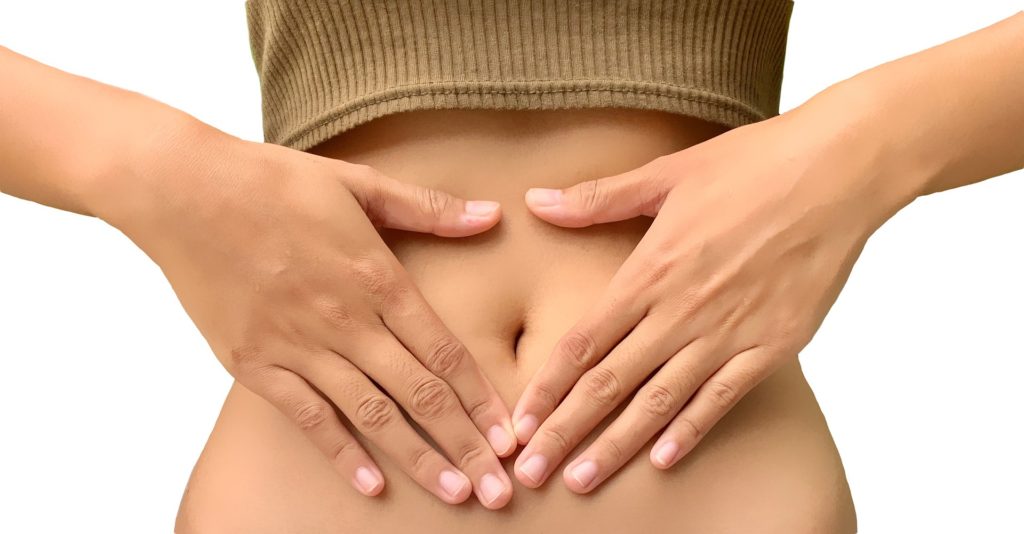
A 2017 study called Gut microbiota’s effect on mental health: The gut-brain axis found that “probiotics show similar reductions in anxiety and depressive symptoms. Human patients suffering from chronic stress were given a three-week probiotic treatment containing Bifidobacteria species. Subjects in the bottom third of the elated/depressed scale demonstrated the most improvement with treatment. These patients rated an overall happier mood on daily analogue scales using six dimensions of mood including energetic/tired, composed/anxious, elated/depressed, clearheaded/muddled, confident/unsure, and agreeable/angry (6).”
The researchers concluded that “probiotics have the potential to diminish the HPA axis response to chronic stressors and prevent or reverse physiologic damage (6).” For much more on probiotics and their benefits on longevity, immune health, testosterone, bodyfat, and more, check out the article The Ultimate Guide (2020): Probiotics Benefits, Brands, And More.
Vitamin D, Magnesium, and Zinc
Important for sleep, testosterone, cortisol/stress management, immune health, and more.
Carnitine
Carnitine has been linked to improved energy, work capacity, focus, and longevity. A study from the Journal of Nutritional Biochemistry found that it may also play a critical role as modulator of cellular stress response in health and disease states (Calabrese 2006).
Astaxanthin
Astaxanthin is carotenoid found in marine organisms that gives them their pinkish tint. It is commonly found in wild salmon, microalgae, shrimp, and trout. It is a powerful antioxidant and has been shown to have positive impacts on:
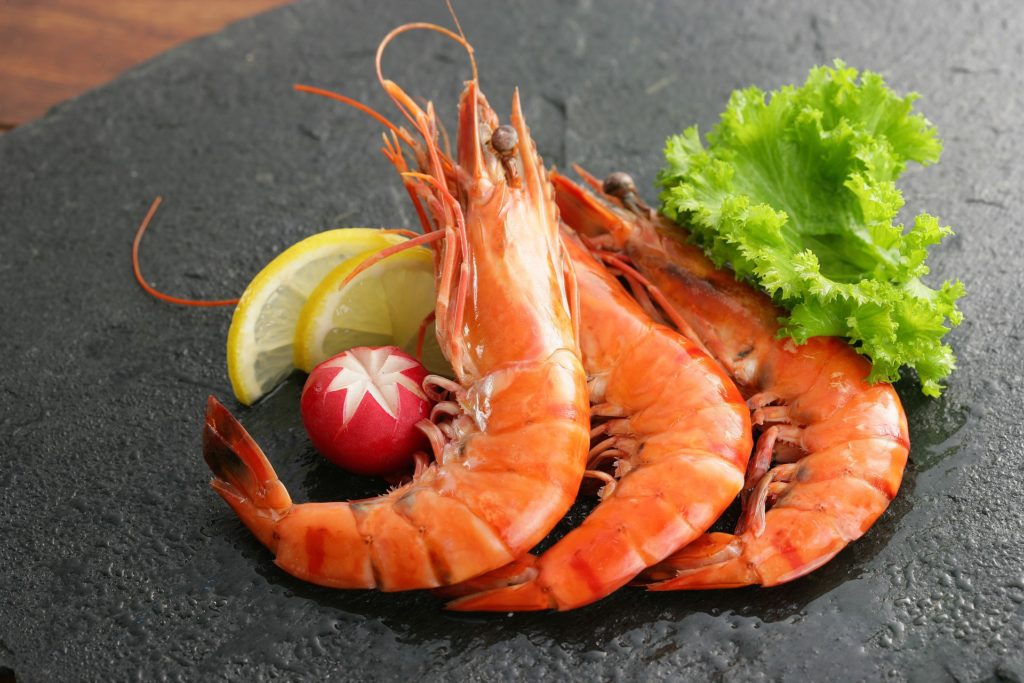
- Insulin and blood sugar (32)
- Muscle growth, performance, recovery (32)
- Oxidative stress and immune/nervous system health (32)
A study from the Journal of Agricultural Food and Chemistry found that astaxanthin had greater capacity to protect cell membranes than vitamin C and vitamin E. The study also found that it had greater antioxidant capacity than alpha-tocopherol, alpha-carotene, lutein, beta-carotene, and lycopene (19).
Sports Research Astaxanthin was the brand of choice for this “self-experiment”.
The “Study”
While this “self-experiment” in no way meets the UNESCO or NGSS’s scientific standards, the goal was to see the impact nutritional manipulations may have on next day physical readiness and sleep scores. While there were many variables outside of my control, sleep, wake, feeding, and training times were consistent. Supplements, coffee, olive oil, coconut oil, sardines/mackerel, kale, beef, eggs, nut, and avocado intake were as consistent as possible as well.
The carb manipulations included type, timing, and amount.
Physical Readiness and Sleep Scores
When you wake up in the morning, the Oura Ring App gives you a Physical Readiness and Sleep Score. You can delve deeper into the biometrics and see your HRV, temp, HR, etc.
Physical Readiness Scores:
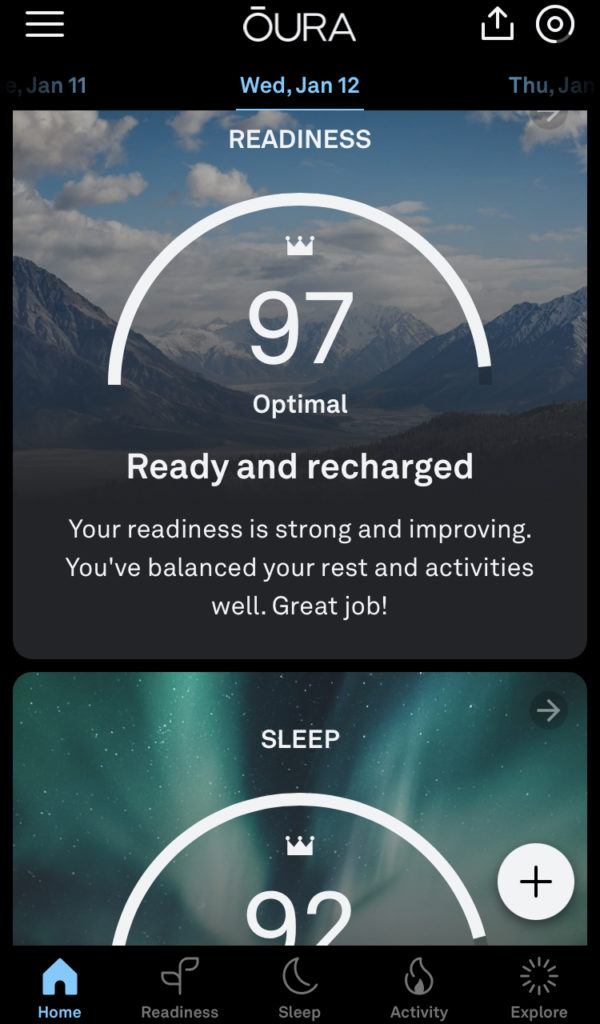
- 90 and over in Green
- 83 – 89 in Yellow
- 83 and below Red
Sleep Scores:
- 90 and over in Green
- 83 – 89 in Yellow
- Below 83 in Red
Chart Labels (these represent intake the day before):
HC: High Carbs (mainly carbs at night)
NC: No (or extremely low carbs)
R: Raspberries
RB: Raspberries and Blueberries
H: Honey
SP: Sweet Potato
P: Popcorn

Thoughts:
- High Carb scores were consistently in the yellow, with one red (Column 1-7)
- No (very low) carb saw improvements in Physical Readiness (Column 9 and 10)
- Raspberries the night before after being low/no carb saw score increase to 96 (Column 11)
- Raspberries and blueberries day before physical readiness score 94 (Column 12)
- Physical Readiness dropped to 87 after high quality carb up day (Column 13)
- Raspberries at 2:00pm day before saw next day Physical Readiness score of 94 (Column 15)
- Tablespoon of Raw Wildflower Honey for dessert saw next day increases in Physical Readiness (Column 16-19)
- Sweet Potatoes with dinner saw 92 next day (Column 20)
- Non-GMO, No HFCS, No Artificial flavors Kettle Korn at 3:00 Pm saw next day score drop to 77 (Column 21)
- Tablespoon of Raw Wildflower Honey for dessert saw next day increases in Physical Readiness (Column 22-24)

Thoughts:
- Beginning High Carb Sleep Scores were consistently in the yellow and red (Column 1-7)
- First No (very low) Carb saw significant improvement in Sleep Score (Column 8)
- 2nd No (very low) Carb saw significant drop in Sleep Score (Column 9)
- Raspberries and blueberries saw Sleep Scores jump into the 90’s (Column 11 and 12)
- Sleep score dropped to 87 after high quality carb up day (Column 13)
- Raspberries, Blueberries, and Honey saw consistent scores in the 90’s peaking at 98 (Column 14-19)
- Sweet Potatoes with dinner saw sleep score drop to 86 (Column 20)
- Non-GMO, No HFCS, No Artificial flavors Kettle Korn at 3:00 Pm saw sleep score drop to 83 (Column 21)
- Tablespoon of Raw Wildflower Honey for dessert saw sleep score increases to 94 (Column 22)
závěr
Circling back to the initial question in the beginning: Does food affect next day physical readiness?
While this was by no means a double-blind, placebo-controlled gold standard study taking into account stress levels, work schedule, environmental temperature, sleep quality, hormonal fluctuations and more, it was interesting to see a correlation between voluntarily adding/subtracting and timing of certain carbohydrates and changes in my sleep and physical readiness scores.
Armed with this info it’s time to try a nutritional self-experiment out for yourself, and see how your nervous system responds!
Thx for reading!
For more info be sure to check out our blog here, or pick up a copy of one of our books!
References
- Amen et al. Patterns of regional cerebral blood flow as a function of obesity in adults. Journal of Alzheimer’s disease. 77(3); Pp 1331-1337. 2021.
- Bocarsly M et al. High fructose corn syrup causes characteristics of obesity in rats: increased body weight, body fat and triglyceride levels. Pharmacol Biochem Behav. 97(1); Pp 101-106. 2010.
- Bolling et al. The phytochemical composition and antioxidant actions of tree nuts. Asia Pac J Clin Nutr. 19(1); Pp 117–123. 2010.
- Buchhorn R et al. The Impact of Nutrition on the Autonomic Nervous System. International Journal of Food and Nutritional Science. 2016. https://doi.org/10.15436/2377-0619.16.942.
- Calabrese et al. Acetylcarnitine and cellular stress response: roles in nutritional redox homeostasis and regulation of longevity genes. The Journal of Nutritional Biochemistry. 17(2); Pp 73-88. 2006.
- Clapp et al. Gut microbiota’s effect on mental health: The gut-brain axis. Clinical Practice. 7(4): 987. 2017.
- Covas et al. The effect of polyphenols in olive oil on heart disease risk factors: a randomized trial. Annals of Internal Medicine. 145(5). 2006.
- Deol P et al. Soybean oil is more obesogenic and diabetogenic than coconut oil and fructose in mouse: potential role for the liver. PLoS One. 10(7); e0132672. 2015.
- Deol P et al. Dysregulation of hypothalamic gene expression and the oxytocinergic system by soybean oil diets in male mice. Endocrinology. 161(2); Pii;bqz044. 2020.
- Gangwisch et al. High glycemic index diet as a risk factor for depression: Analyses from the Women’s Health Initiative. American Journal of Clinical Nutrition. 102(2); Pp 454-463. 2015.
- Golomb and Bui. A Fat to Forget: Trans Fat Consumption and Memory. PLoS One. 10(6): e0128129. 2015.
- Horne et al. Health effects of intermittent fasting hormesis or harm? A systematic review. American Journal of Clinical Nutrition. 102(2); Pp 464-470. 2015.
- Jacka et al. Western Diet is associated with a smaller hippocampus: A longitudinal investigation. BMC Med. 12; Pp 215. 2015.
- Jacka et al. A randomized controlled trial of dietary improvement for adults with major depression (the “SMILES” trial). BMC Medicine. 15(23); 2017.
- Kopp W. Chronically increased activity of the sympathetic nervous system: our diet-related “evolutionary” inheritance. The Journal of Nutrition, Health & Aging. 13(1); 2009.
- Longo et al. Fasting regulates EGR1 and protects from glucose and dexamethasone-dependent sensitization to chemotherapy. PLoS Biology. 15(3); 2017.
- Mohsen et al. Inflammatory Markers Are Positively Associated with Serum trans-Fatty Acids in an Adult American Population. Journal of Nutrition and Metabolism (Hindawi). Volume 2017. |Article ID 3848201.
- Molfino et al. The role for dietary omega-3 fatty acids supplementation in older adults. Nutrients. 6(10); Pp 4058-4072. 2014.
- Naguib Y. Antioxidant activities of astaxanthin and related carotenoids. Journal of Agricultural Food and Chemistry. 48(4); Pp 1150-1154. 2000.
- Nedergaard et al. Sleep Drives Metabolite Clearance from the Adult Brain. Science. 342(6156); Pp 373-377. 2013.
- Nedergaard et al. Increased glymphatic influx is correlated with high EEG delta power and low heart rate in mice under anesthesia. Science Advances. 5(2); 2019.
- Oi-Kano Y et al. Oleuropein supplementation increases urinary noradrenaline and testicular testosterone levels and decreases plasma corticosterone levels in rats fed high-protein diet. Journal of Nutritional Biochemistry. 24(5); Pp 887-893. 2013.
- Olas B. Berry Phenolic Antioxidants – Implications for Human Health? Front Pharmacol. 9: Pp 78. 2018.
- Ooi T et al. Intermittent Fasting Enhanced the Cognitive Function in Older Adults with Mild Cognitive Impairment by Inducing Biochemical and Metabolic changes: A 3-Year Progressive Study. Nutrients. 12(9): 2644. 2020.
- Park SK et al. Fruit, vegetable, and fish consumption and heart rate variability: the Veterans Administration Normative Aging Study. The American Journal of Clinical Nutrition. 89(3); Pp 778-786. 2009.
- Phillips M. Fasting as a Therapy in Neurological Disease. Nutrients. 11(10): 2501. 2019.
- Pratico et al. Consuming extra virgin olive oil could be a viable therapeutic opportunity for preventing or halting dementia and Alzheimer’s Disease. Biofoundations. June 2017.
- Ruby et al. Estimates of the heritability of human longevity are substantially inflated due to assertive mating. Genetics. 210(3); Pp 1109-1124. 2018.
- Schnabel et al. Association between ultraprocessed food consumption and risk of mortality among middle-aged adults in France. JAMA Internal Medicine. 179(4); Pp 490-498. 2019.
- Shojaie M et al. Intermittent fasting could ameliorate cognitive function against distress by regulation of inflammatory response pathway. Journal of Advanced Research. 8(6): Pp 697–701. 2017.
- Staubo et al. Mediterranean Diet, micro and macronutrients, and MRI measures of cortical thickness. Alzheimer’s and Dementia. 13(2); Pp 168-177. 2017.
- Sztretye et al. Astaxanthin: A Potential Mitochondrial-Targeted Antioxidant Treatment in Diseases and with Aging. Oxidative Medicine and Cellular Longevity. 3849692.2019.
- Tentolouris N et al. Differential effects of high-fat and high-carbohydrate isoenergetic meals on cardiac autonomic nervous system activity in lean and obese women. Clinical Trial Metabolism. 52(11); Pp 1426-1432. 2003.
- Yoon and Song. Intermittent Fasting: a Promising Approach for Preventing Vascular Dementia. J Lipid Atheroscler. 8(1): Pp 1–7. 2019.
- Young J and Landsberg L. Diet-induced changes in sympathetic nervous system activity: possible implications for obesity and hypertension. Journal of Chronic Disorders. 35(12); Pp 879 – 886. 1982.
